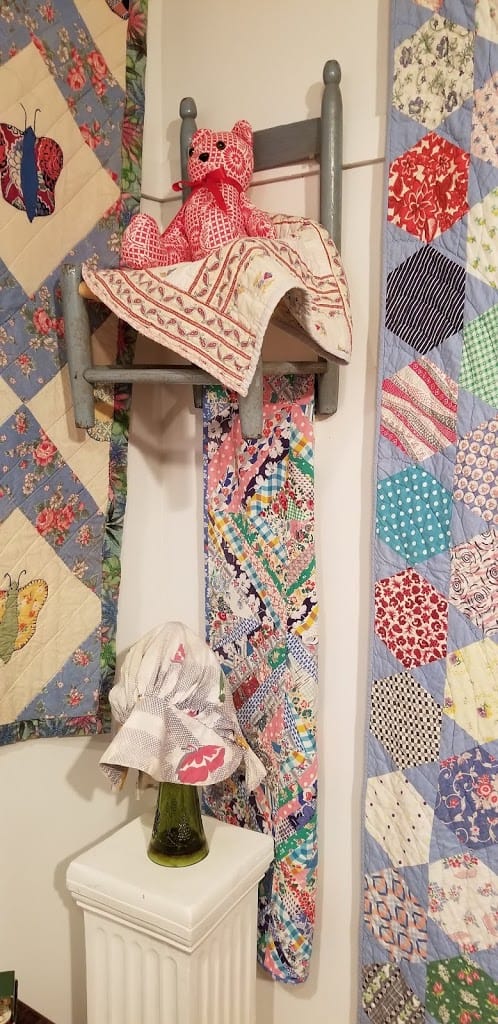“Sweet and Sassy” Feed Sack Exhibit
Our 2019-2020 exhibit featured a variety of local feed sack creations

BRIEF HISTORY OF FEED SACKS: It was not until 1846, when Elias Howe introduced his “stitching machine” that it became practical to store and ship dry goods in sacks instead of barrels. These early canvas sacks were lightweight and sturdy thanks to their “double-locked” seams. Farmers reused these sacks for storing their own seed corn and potatoes.

By the late 1800s, mills began producing sacks from cheap cotton cloth stamped with contents size and manufacturer name. Farm women soon claimed these to sew into diapers, sheets, towels, and underwear. After bleaching the stamped lettering, they sometimes joined several sacks together to create bed coverings. They might dye or embroider the pieces using the same string originally used to close the sacks.

In the 1920s savvy manufacturers began printing patterns on the sack material used for animal feed. Companies regularly introduced new patterns. Chicken and hog feed sales soared as thrifty farm women turned the cheerful and sometimes whimsical patterns into shirts, dresses, aprons, and curtains. Scraps were incorporated into quilts and patterns swapped among the neighbors.
Farmers learned to buy multiple sacks of feed with the same pattern for their wives’ projects. One sack might become a child’s shirt, an apron, or a pillowcase. A woman’s dress required three sacks. Store employees dreaded rearranging stacks of full sacks to accommodate shoppers.

During World War II, patriotic themes and colors appeared on the sacks. With so many women taking “public works” jobs during and after the war, demand for goods sold in cotton sacks began to decline. Working women had less time for baking biscuits, raising chickens, and sewing. In the 1950s and 1960s many of the community stores and mills closed. Vaughn’s Mill in Indian Valley was one of the last county businesses to carry animal feed in cotton sacks. They sold their last sacks in the 1980s.
How do you know if you have a piece of feed sack material?
Feed sacks were made of coarsely woven cotton. Even though frequently laundered items such as pillowcases may feel very soft, generally the warp and weft threads are noticeable. On some pieces, obvious rows of holes remain where the threads or strings used to close the sacks were removed. The width of the material and the selvages also help identify its origin as sack material.
Take a virtual video tour of this exhibit, shown below, courtesy of Citizens Telephone Cooperative –

